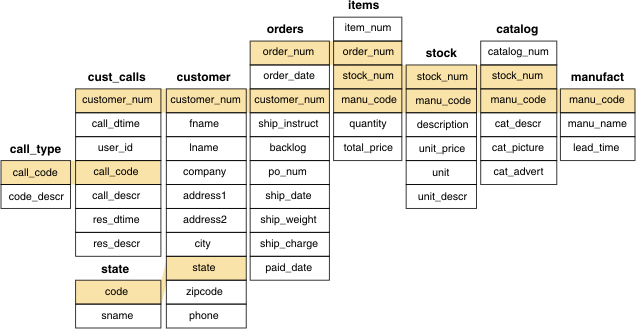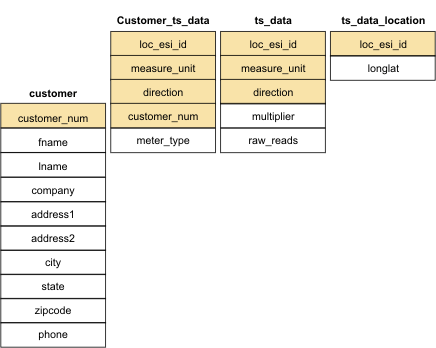The stores_demo Database Map
Some of the tables in the stores_demo database have relationships between them.
The following illustration displays the joins in the stores_demo database between customers, catalog orders, and customer calls. The shading that connects a column in one table to a column with the same name in another table indicates the relationships, or joins, between tables.

The following illustration displays the joins in the stores_demo database between customers, electricity meter data, and location. The Customer_ts_data, ts_data, and ts_data_location tables contain time series data. You can prevent the creation of these time series tables when you create the demonstration database.
The stores_demo database also contains tables that hold electricity meter data fro customers. The Customer_ts_data and ts_data tables contain time series data. The customer table and the Customer_ts_data table are joined by the customer_num column. The Customer_ts_data table is joined to the ts_data table by the loc_esi_id, measure_unit, and direction columns. You can prevent the creation of these time series tables when you create the demonstration database.
